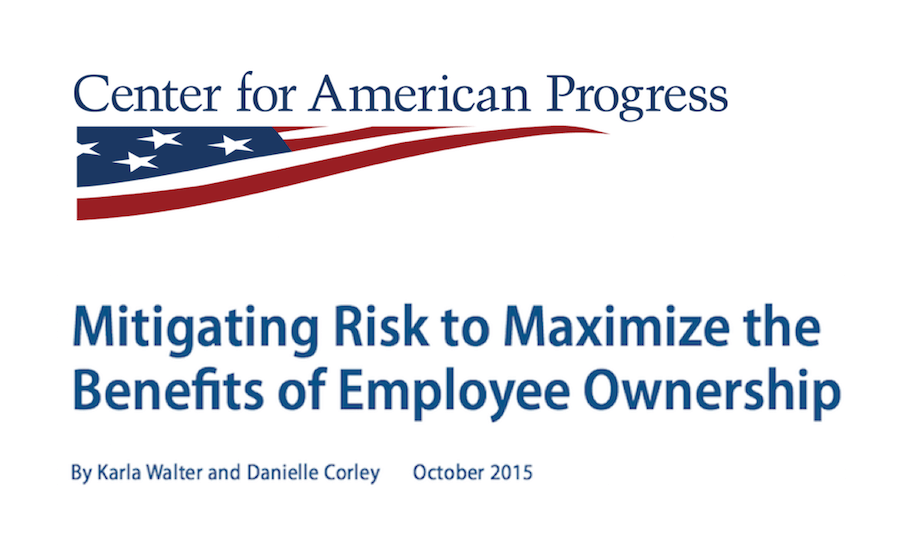Center for American Progress Issues Report on Mitigating Risks of ESOPs
Think tank says inclusive capitalism should be encouraged while mitigating the associated risks

The Center for American Progress (“CAP”) has released a comprehensive 32-page report entitled “Mitigating Risk to Maximize the Benefits of Employee Ownership.”
The report is intended to “start a dialogue about how to better protect workers while still offering the benefits of inclusive capitalism.” It offers a thorough evaluation of the financial benefits and risks associated with ESOPs, particularly for employee-owners who are vital to the ESOP’s success.
Drawing on a large body of research, the report concludes that, from a public policy perspective, the risks associated with ESOPs are outweighed by the wealth-generating benefits ESOPs regularly produce for employee-owners. This conclusion is based primarily on two considerations: (a) unlike most public companies, ESOPs allow employees to directly participate in corporate profitability; and (b) because of employee loyalty, tenure, and motivation, ESOPs are less likely to experience catastrophic failures as compared to their non-ESOP peers, although the report acknowledges that some failures are inevitable, even among ESOP companies.
After reaching this conclusion, the report considers how ESOPs can be further improved by focusing on mitigating the risks associated with concentrated stock positions. The report correctly points out that although ESOPs have a strong historical track record of growth and stability, no business is immune to failure and, when they do fail, the consequences for ESOP participants can be more severe than the consequences for equity holders in non-ESOP companies because their job security will be affected as well as their investment in employer stock.
It is this vulnerability of ESOPs and their participants that the report fully considers in its concluding pages. The report commends ESOPs for pursuing various ways of reducing risk to employee-owners, including participation in the ESOP Protection Trust. The report doesn’t fully explore the differences between traditional means for dealing with risk, which are generally focused on mitigating the risk of lack of diversification, and the EPT’s approach, which reimburses losses on concentrated stock positions when they occur, regardless of the source of the losses.
Further Reading
- Mitigating Risk to Maximize the Benefits of Employee Ownership View Article